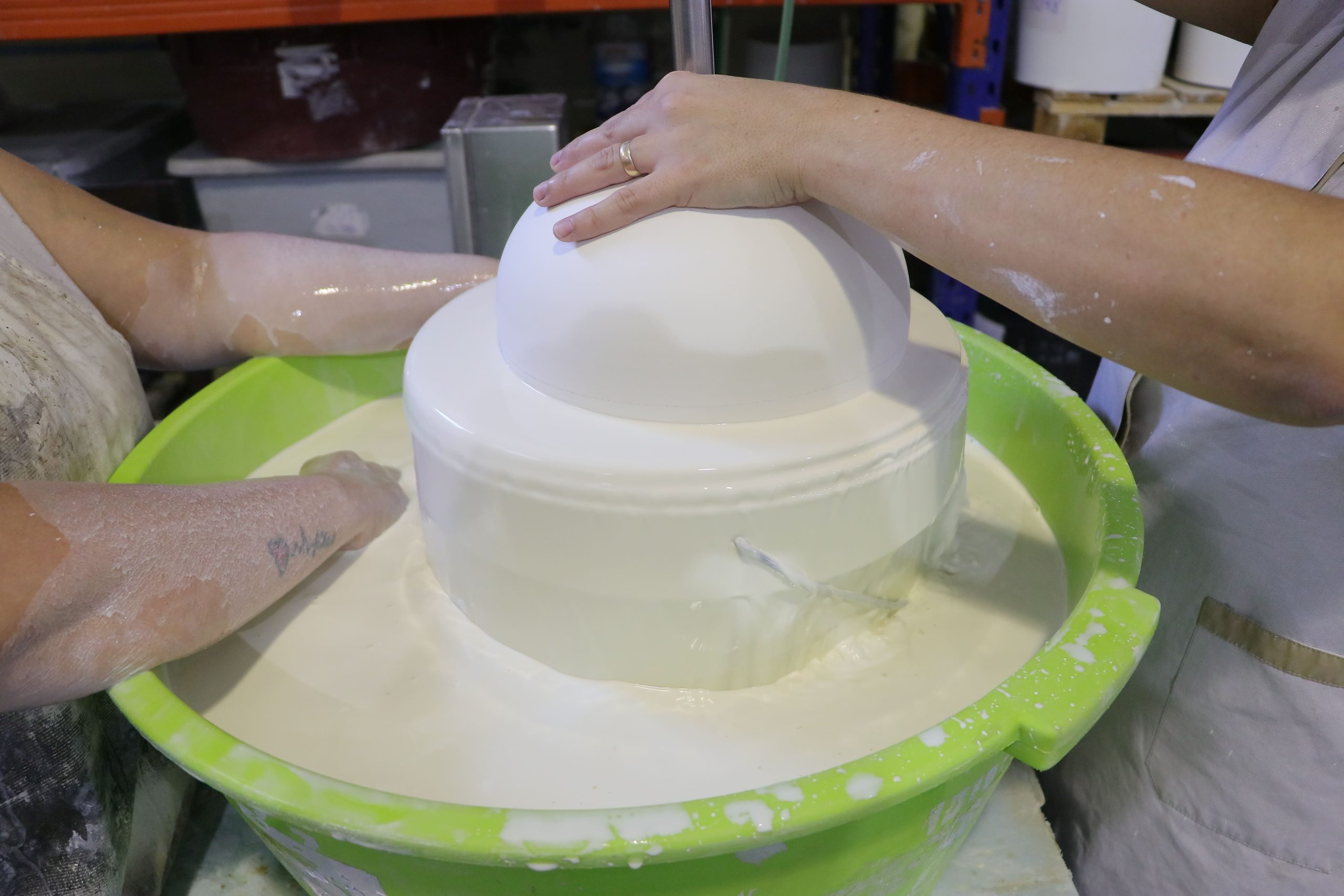Earthenware is the oldest type of pottery and our favorite. The faience (earthenware), owes its name to the Italian city of Faenza, the Italian Renaissance center of ceramics during the 15th and 16th centuries.
Biscuit
The first step in earthenware production is a proper biscuit, well fired and clean, which is basically the state of ceramics after the first firing, required to harden the earthenware and consolidate its shape. As it is slightly porous and coarse, it needs to be glazed or fired a second time with a water repellent in order to turn watertight.
While earthenware has a greyish color while raw, it bleaches during burning (as you can see below) and due to its noble appearance, it is a traditional Portuguese product used on the tables and house’s wall coverings (with the shape of tiles) since the 16th century.

Glazing
Now, what is a glaze? A glaze is like a glass coating and it can be glossy, matte, translucent, opaque, smooth and textured. The combinations are endless, all you have to do is test different compositions. You can learn more glazing and our favorite methods here. For this second step, we normally fire our earthenware between 1000ºC and 1080ºC, which is higher than terracotta and lower than stoneware and porcelain (you can learn more about the different types of ceramics here).

Since earthenware clay materials are abundant in Portuguese soil and because of its biggest differentiator within ceramics- a big variety of possible decorations, textures, and color -it is our favorite product to manufacture and distribute worldwide, as we have said before.
With an infinite number of possibilities that transform the base product to such pieces of great value, it is undoubtedly the best choice for decorative and utility pieces.
If you have any questions…
